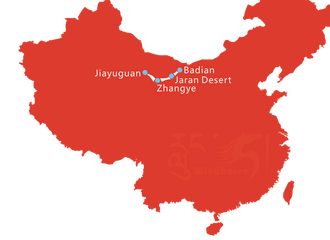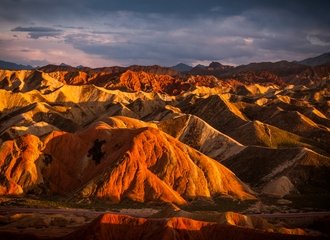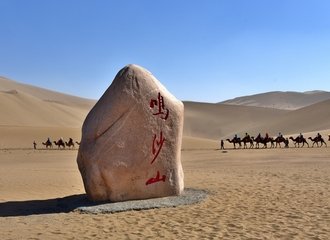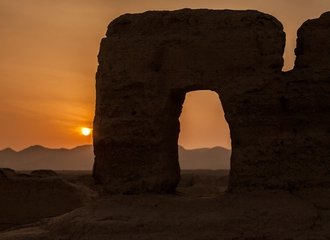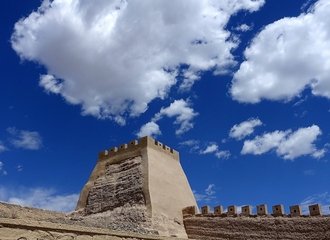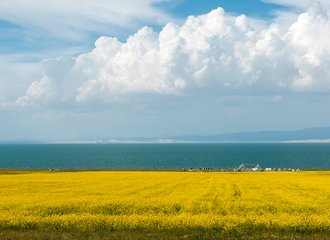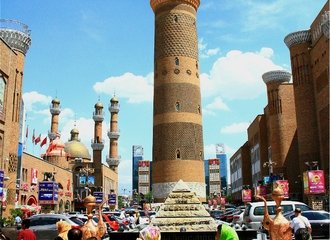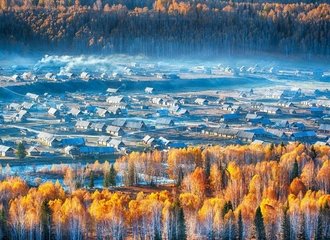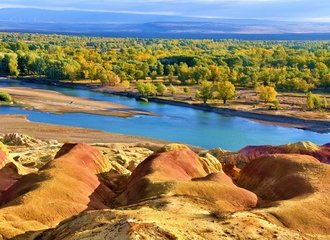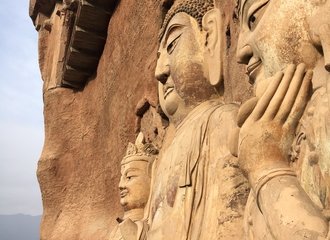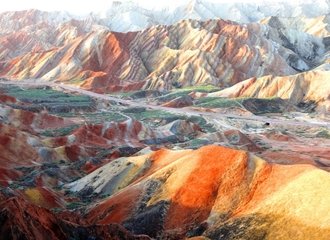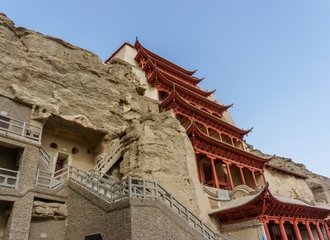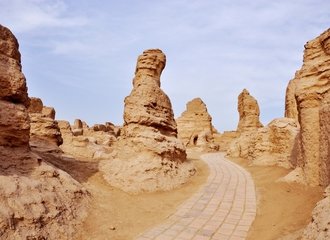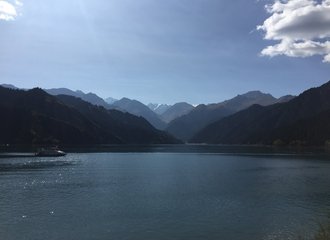Garze Tibetan Autonomous Prefecture
Nestled on the southeastern edge of the Qinghai-Tibetan Plateau, in western Sichuan Province, lies the Garze Tibetan Autonomous Prefecture. Covering 153,000 square kilometers and home to approximately 890,000 people, this region is a mosaic of 18 counties, with its capital in Kangding.
Cultural Significance
Garze, also known as Ganzi, stands as the heart of the Kham region, one of the three pillars of Tibetan culture. It's not only a cultural hub but also an ecological gem within the Shangri-La travel region, stretching across Sichuan, Yunnan, and Tibet. This area is a treasure trove of history and linguistics, boasting historical artifacts and a rich cultural tapestry.
Accessibility and Travel Routes
Ganzi is the most accessible Tibetan area from Chengdu. A mere 4-hour drive takes you from Chengdu to Hailuogou, and a few hours more to reach Kangding. Its proximity and excellent connectivity make it a favored destination for those seeking to explore Tibetan culture.

Sightseeing and Attractions
The region offers diverse experiences
Eastern Ganzi
Eastern Ganzi, a region steeped in the rich traditions of Kham culture and blessed with breathtaking ecological landscapes, presents a mesmerizing tableau for the discerning traveler. This area, forming an integral part of the Garze Tibetan Autonomous Prefecture, is a symphony of natural wonders and cultural heritage, highlighted by three main attractions: Gongga Mountain, the Tibetan architecture in Daofu, and the scenic Thousand Towers.
Gongga Mountain: The King of Sichuan’s Peaks
Dominating the landscape, Gongga Mountain, also known as Minya Konka, rises majestically as one of the highest peaks in Sichuan Province. Towering at an impressive altitude of over 7,500 meters, it is often referred to as the "King of Sichuan Mountains." This snow-capped giant, embraced by glaciers and alpine lakes, offers a stunning backdrop for trekkers and nature enthusiasts. The mountain is not just a natural wonder but also holds significant spiritual value, being a sacred site in Tibetan Buddhism. The trails leading to its base camps are dotted with Tibetan prayer flags, adding a spiritual dimension to its awe-inspiring beauty.

Daofu: A Testament to Tibetan Architectural Splendor
Daofu, known for its unique Tibetan architecture, is a cultural gem in Eastern Ganzi. The town is renowned for its intricately designed wooden houses, a distinctive feature of Kham architecture. These structures are aesthetically pleasing and engineered to withstand the rigors of the high-altitude climate. The vibrant colors and elaborate carvings on these buildings reflect the rich artistic heritage of the Tibetan people. A walk through Daofu is akin to a journey through a living museum, offering insights into the architectural ingenuity of the Tibetans.
The Scenic Thousand Towers: An Ancient Marvel
The Thousand Towers, an array of ancient watchtowers, stand as silent sentinels over the landscape of Eastern Ganzi. These towers, some dating back to the Tang Dynasty, are a testament to the region’s historical significance and architectural prowess. Each tower, varying in height and design, tells a story of a bygone era. They were originally built for defense and communication purposes and now attract historians and tourists alike, who are captivated by their enduring mystery and grandeur.
In conclusion, Eastern Ganzi is a region where the magnificence of nature meets the richness of Tibetan culture. From the soaring heights of Gongga Mountain and the architectural wonders of Daofu to the ancient mystery of the Thousand Towers, this area offers an unforgettable journey into the heart of Tibetan heritage and natural splendor.
Northern Ganzi
Northern Ganzi, nestled in the Garze Tibetan Autonomous Prefecture, is a region deeply imbued with the essence of Kham culture, offering an array of spiritual and historical sites that resonate with the soul of Tibetan Buddhism. This area is especially celebrated for its rich religious heritage, exemplified by landmarks such as the Dege Scripture Printing Lamasery, the legendary birthplace of King Gesar, and an array of prominent monasteries.
Dege Scripture Printing Lamasery: A Beacon of Tibetan Buddhism
The Dege Scripture Printing Lamasery, or Dege Parkhang, is a cornerstone of Tibetan spiritual and cultural life. It stands as one of the most significant centers for Tibetan literature and art. This printing house, established in the 18th century, houses an incredible collection of Tibetan texts, including sacred Buddhist scriptures, literature, and historical documents. The lamasery is renowned for its ancient woodblock printing techniques, preserving texts that date back centuries. Visitors to this site can witness the remarkable process of traditional printing, where monks meticulously hand-print and bind sacred texts, a practice that has been preserved through generations.

King Gesar's Birthplace: A Mythical Heritage Site
In the folklore of Tibetan culture, King Gesar is a legendary figure, often regarded as a hero in the epic 'Gesar of Ling.' His purported birthplace in Northern Ganzi has become a pilgrimage site for those drawn to the epic’s rich tapestry of heroism, spirituality, and history. The site offers an intimate connection to the epic’s vivid narratives, allowing visitors to immerse themselves in the legend that has shaped much of Tibetan culture and literature.
Monasteries Galore: Spiritual Hubs of Kham Culture
Northern Ganzi is dotted with numerous monasteries, each serving as a hub for spiritual learning and religious practice. These monasteries are not just places of worship but also centers of education and cultural preservation. They offer a glimpse into the daily life of Tibetan monks and the spiritual practices that form the backbone of Tibetan Buddhism. Among these, some notable ones include the Palpung Monastery, known for its intricate artwork and rich history, and the Dzogchen Monastery, revered for its profound teachings in meditation and philosophy.
In sum, Northern Ganzi is a region that beckons those interested in exploring the depths of Tibetan spirituality and culture. From the historic halls of the Dege Scripture Printing Lamasery to the mythical allure of King Gesar's birthplace and the serene ambiance of its many monasteries, this area offers a journey into the soul of Kham culture, rich with history, spirituality, and artistic expression.
Southern Ganzi
Southern Ganzi, a part of the Garze Tibetan Autonomous Prefecture, is often likened to the mythical Shangri-La, a land of enchanting beauty and spiritual serenity. This region, imbued with natural wonders and spiritual significance, features some of the most awe-inspiring attractions such as the Daocheng Yading Nature Reserve, Cuopu Lake, and the Genie Holy Mountain.
Daocheng Yading Nature Reserve: A Pristine Wilderness
The Daocheng Yading Nature Reserve is often referred to as the "Last Pure Land on the Blue Planet," and for good reason. This stunningly beautiful nature reserve is renowned for its three sacred mountains – Chenresig, Jambeyang, and Chanadorje – which are said to represent compassion, wisdom, and energy, respectively. The area is characterized by its crystal-clear lakes, verdant meadows, and snow-capped peaks, creating a landscape that seems almost ethereal. It is a haven for trekkers, nature enthusiasts, and photographers seeking to capture the unspoiled beauty of nature. The Reserve is not only a natural wonder but also a spiritual sanctuary, where the tranquility of nature intertwines with Tibetan Buddhist beliefs.

Cuopu Lake: The First Lake of Eastern Tibet
Cuopu Lake, also known as the "First Lake of Eastern Tibet," is another gem in Southern Ganzi. This high-altitude lake, set amidst rugged mountains, is revered for its spiritual significance and stunning beauty. The crystal-clear waters of the lake reflect the surrounding peaks, creating a mesmerizing and tranquil environment. It is a perfect spot for meditation, contemplation, or simply soaking in the pristine beauty of the Tibetan landscape.
Genie Holy Mountain: A Sacred Summit
The Genie Holy Mountain, locally known as Minya Konka, is one of the most revered mountains in Tibetan culture. Standing tall at over 6,000 meters, it is considered a holy site by the local people. The mountain's towering presence and the surrounding wilderness offer a profound sense of connection to nature and spirituality. Pilgrims and adventurers alike are drawn to this sacred mountain, seeking both the challenge of its ascent and the spiritual fulfillment it offers.
In conclusion, Southern Ganzi is a region that encapsulates the mystical essence of Shangri-La. With its breathtaking landscapes and spiritual sites like the Daocheng Yading Nature Reserve, Cuopu Lake, and Genie Holy Mountain, it offers a journey into a land where the splendors of nature and the depths of spirituality converge, creating an unforgettable experience for all who visit.
Architectural Marvels
Garze’s architectural diversity is stunning. From the colorful interiors of Daofu houses and the sturdy stone houses of Daocheng, Litang, and Yajiang, to the elegant designs in Luhuo and Xinlong, and the unique white Tibetan houses in Xiangcheng and Derong. Danba’s stone lookout towers and the nomadic tents in Seda, Ganzi, and Shiqu add to this architectural kaleidoscope.
Cultural Highlights
Ganzi is a vibrant testament to Kham Tibetan culture. Its landscapes and spiritual life offer an authentic experience of Tibetan plateau life. The region is famous for the Kangding Love Song, an emblem of its rich folk heritage.
Tourist Essentials
Tea Culture
Visitors must try the local tea, an integral part of Tibetan life. From milk tea to yak-oil tea, each variety offers a unique taste of Ganzi.

Costumes and Jewelry
The Kangzhuang costumes and ornate jewelry of gold, silver, pearls, and gems reflect the wealth and artistry of the Kangba Tibetan families.
Music and Festivities
Join in the local tradition of singing toasts while sipping qingke (highland barley) liquor.
Awards and Recognition
Garze’s beauty is nationally recognized. Dubbed “The Most Beautiful Place in China”, it features several prized scenic spots, including Danba Tibetan Village and the Hailuogou Glacier. Its accessibility and potential for development make it a prime tourist destination.
Final Thoughts
Garze is not just a place; it's an experience. Its rich cultural landscape, coupled with the mesmerizing Kangding Love Song, offers a journey through the heart of Tibetan culture. Plan a trip to this beautiful cultural haven in Sichuan and immerse yourself in the wonders of Garze.


